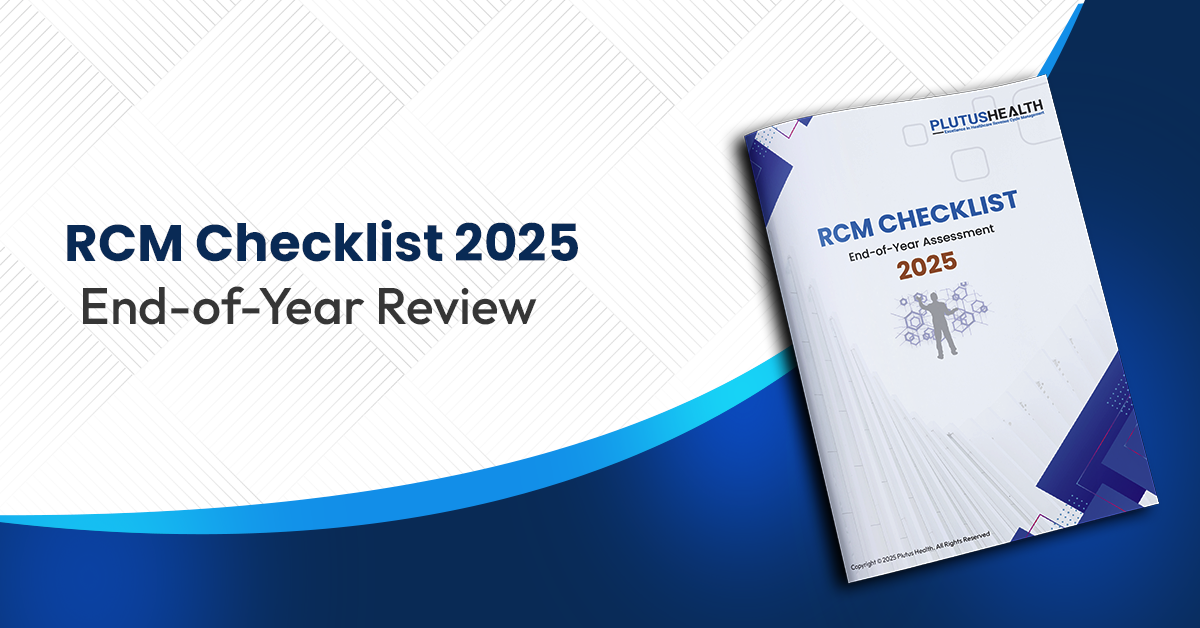Family Practice Coding: Challenges, Common Mistakes, and Best Practices
Family practice is a primary care physician that offers healthcare services to all age groups, from newborn babies to older people. Family practice coding and billing is very complicated due to the involvement of different healthcare treatment and patient groups. 84% of healthcare providers believe that coding errors and inaccurate clinical documentation are the primary reasons for claim denials. Accurate claims need to be submitted to the payers to get complete reimbursement.
More than $100 billion get lost by healthcare providers due to coding mistakes, billing errors, and the inability to stay compliant with changing regulations. Like every other specialty, medical billers and coders must thoroughly know all the procedures and codes to file clean claims. In this blog, we will discuss one of the most important family practice revenue cycle management processes i.e. medical coding. You will also get solutions to the most common challenges family practitioners face regarding medical coding.
In this blog:
- How does the family practice medical billing and coding work?
- Challenges in family practice billing and coding
- Family practice common coding mistakes
- How to achieve error-free coding for family practice?
- Outsourcing family practice coding
- How can Plutus Health help in family practice coding?
“Due to the wide range of diagnosis treatment and care provided by family practice, there is a huge demand of family practice coders that are thorough, specific, and highly precise with their coding abilities,” Cooper Philips, Medical Coding Expert, Plutus Health.
How does the family practice medical billing and coding work?
According to a report published by HFMA, claims worth $5 million per physician gets denied due to medical coding errors. As family practice is not specific for any age, diagnosis, organ, societal, or hereditary. And there are different sub-segments like palliative, pediatric, sleep, geriatric, sports, and surgical medicine. Family practice medical coding is challenging. It requires clean claim submission with complete and correct documentation. Family practitioners must ensure HIPPA Compliance, error-free claim submission, denial management, and affordable pricing.
The billing and coding process is similar to other specialties, but there are a few important processes that you need to track to streamline your RCM.
- Clean claim submission
- Denial management
- Timely submission
- Reimbursement rates
- Timely follow-up
- Reporting and analytics
Challenges in family practice billing and coding
Here are the most common challenges family practitioners face in billing and coding.
Optimizing documentation
Family practice RCM experts must have a detailed document that includes all kinds of services provided to patients from when they book an appointment until they leave the practice after completing the healthcare procedure. Accurate documents help family practice billers understand the services offered and submit the claims accurately. Precise documentation is a big challenge for family practice. Missing documents and human errors complicate this challenge.
Increased coding errors
Medical coding is complicated. Healthcare providers lose $125 billion every year due to medical coding errors.
For family practice, coders must be certified, experienced, and highly trained. There are two main family practice medical coding errors.
- The family practice offers many healthcare services to different patients. There are times when multiple procedures and diagnostic tests are performed. Medical coders must have extensive knowledge of all the codes and modifiers used.
- ICD/CPT codes keep on changing with time. Family practice coders must update their skills and knowledge to stay updated with industry trends and compliance.
Delayed AR cycle
Pending AR (Accounts Receivable) is a big challenge for healthcare providers. Pilled-up AR can lead to large financial damage and significantly hinder practice growth. It is very important for family practitioners to manage their AR to prevent a 5-15% loss of their annual revenue. The total time taken between offering the service and getting paid is the AR cycle. Average AR days can be between 25-30.
“If your AR days are greater than 50 then you must consider revamping your RCM process.”
Family practice faces challenges with delayed AR as they do not timely analyze the existing RCM process and make the necessary changes when needed. Family practitioners suffer from cash crush and slow growth due to the extended AR cycle.
Handling large medical billing volumes
As the family practice grows, there is an increase in patient volume. There are times when there are fewer patients, while there are times when there are many. Managing excess bills is a problem for family health practice. The shortage of talented staff is a major problem that leads to the inability to handle huge medical billing volumes.
Family practice common coding mistakes
Staying updated with the constantly updating CPT codes is the biggest challenge with family practice coding and billing processes. Medical coders must use proper ICD and CPT codes to get the reimbursement needed. CPT code guide and document requirements keep changing, and most denials happen due to the wrong use of CPT codes. Here are the most common family practice coding mistakes:
Use of wrong codes
Family practice medical coders sometimes use wrong or old codes, resulting in denials, lost revenue, or late payment.
Documentation errors
Missing or improper documentation leads to coding errors. Coders often fail to select appropriate E/M levels resulting in errors.
Wrong use of modifiers
The use of modifiers is more complex than it looks. Family practice medical coders must have vast knowledge to use modifiers appropriately. There are a set of rules and regulations that family practitioners should follow to combat lost reimbursement.
Improper charge entry
Family practitioners deal with different age groups, patients, and diseases. Family practice service providers need to document all the processes offered to patients. They must do appropriate charge entry to bill the claim appropriately to the insurance company.
Service necessity
The claim submitted to the insurance provider must consist of the medical necessity of the services offered to the patient. Insurance payers reject the claims if a family practice fails to offer medical necessity.
Not update on guidelines
Medical coding guidelines keep on updating regularly. Family practice must stay updated with these guidelines to avoid lower revenue and late payments.
How to achieve error-free coding for family practice?
To submit clean claims, family practice must avoid all the common medical coding and billing mistakes. They should use appropriate family practice CPT codes. Here are the top ways to achieve error-free coding for family practice.
Manage claims appropriately
Family practice medical coders must ensure that submitted claims against the services provided are error-free. The claims must contain all the information and necessary documents requested by the insurance company. Family practitioners must submit claims on time to avoid rejections or late submissions.
Reduce coding errors
Medical coding errors are high for family practice because it involves using distinct codes for various age groups and a wide range of procedures. Below are the common coding errors you must avoid.
- Confusion between two similar codes
- Use of wrong or old codes
- Treatment and DX (Diagnosis) codes not matching each other
- Improper use of modifiers
On-time denial and claim rejection management
There might be many reasons for denials or claim rejections. The most appropriate way for denial management is to detect and rectify the errors on time. Family practice must promptly manage their denial and rejections. They must understand the difference between claim denials and rejections. Family practice medical coders must understand the denial trends and avoid all the common mistakes.
Detect the areas of improvement
There are multiple ways to streamline revenue cycle management for family practice. To streamline RCM, it is vital to understand the functioning of each RCM process and detect the areas of improvement. Family practice can conduct an RCM audit and find reasons hindering their growth. After detecting the errors, they must create a proper strategy to move toward growth goals.
Outsourced Vs. In-house family practice coding
To streamline your RCM process, you should outsource or form an in-house family practice coding team. Forming an in-house team requires additional infrastructural and technical upgradation. Additionally, there is a huge staff shortage. If you outsource family practice coding, you get access to a team of certified coders. The family practice deals with many patients with different diseases, so they must be thorough with their RCM process.
Advantages of outsourcing family practice coding
“Outsourcing family practice coding can provide significant benefits in terms of accuracy, efficiency compliance, and revenue.”
Access to industry expertise
Family practice medical coding service providers have a team of (AAPC AHIMA-certified coders with years of expertise and experience. Medical coders are updated with the latest coding guidelines and use modern technology to deliver the desired results. Family practice coding providers understand best practices in RCM and follow them to give the desired results.
Reduced burden
Medical coding for family practice can be complex and time-consuming. Outsourcing family practice medical coding can reduce your administrative burden. Outsourcing also frees your staff to focus on patients and other important tasks.
Improved accuracy
Coding errors can lead to delayed payments or sometimes complete revenue loss, hindering practice growth. Outsourcing to the best family practice medical coding service provider can reduce coding errors and improve accuracy.
Increased compliance
Coding rules and guidelines keep updating, and family practice coders must stay up-to-date with these to stay compliant. Outsourcing ensures that you remain compliant with the requirements and regulations.
Cost savings
Family practice can avoid the cost of training and hiring in-house medical coders when you outsource to RCM experts. You don’t need to invest in additional technology and infrastructure, thus saving a huge cost.
How can Plutus Health help in family practice coding?
Plutus Health has 15+ years of experience providing medical coding services for family practice. We provide AI-based RCM solutions to help family practice service providers reach their desired goals. Our team has certified and highly skilled professionals that can help you achieve your growth goals without disturbing your present processes. We have experience in coding and submitting claims to various patients and procedures. Our experts help you with customized billing and stay updated on medical coding and billing amendments. You can expect higher revenue, minimum errors, faster payment, and maximum reimbursements. Do you want to know more about Plutus Health’s family practice medical billing and coding services?
Liked the blog? Share it
FAQs


ABA providers are grappling with high staff turnover (up to 65%), rising burnout, administrative overload, and stagnant reimbursement rates. These challenges directly impact care continuity, clinical outcomes, and operational performance.


Operational inefficiency costs ABA teams up to 10 hours per staff member per week, contributing to burnout, denied claims, and longer accounts receivable (A/R) cycles. These inefficiencies ultimately result in reduced revenue and patient dissatisfaction.


Burnout leads to costly turnover, lower client retention, and decreased productivity. Recruiting and replacing a BCBA or RBT can cost up to $5,000 per hire, plus months of lost revenue and disruption to morale.


High-performing ABA organizations invest in clear career pathways for BCBAs and RBTs, align compensation with market benchmarks, and foster peer-led mentorship, flexible schedules, and wellness programs.


Automation tools like Plutus Health's Zeus streamline eligibility verification, denial management, and billing, reducing manual workloads by 5–10 hours weekly per clinician and improving clean claim rates by 95%.


Outsourcing revenue cycle management can improve collections, reduce denials by up to 30%, and free clinicians from billing-related admin tasks, resulting in better client care and financial outcomes.


One $200 million ABA network partnered with Plutus Health to automate eligibility and accounts receivable (A/R) processes. The result: $2M reduction in legacy A/R and a 97% Net Collection Rate.


By improving operational efficiency, investing in technology, and ensuring workforce stability, ABA leaders can align outcomes with reimbursement. Plutus Health supports this transition with scalable RCM and automation strategies.
FAQs


ABA therapy billing is the process of submitting claims to insurance or Medicaid for Applied Behavior Analysis services provided to individuals with autism or developmental disorders. It includes using correct CPT codes, proper documentation, and adherence to payer-specific policies.


Common CPT codes for ABA therapy in 2025 include:
- 97151 – Assessment and treatment planning
- 97153 – Direct therapy with the patient
- 97155 – Supervision and modification of behavior plan
- 97156 – Family adaptive training
- Always check with payers for any annual changes.


To bill Medicaid for ABA services, providers must ensure credentialing is complete, services are pre-authorized, and claims use the correct codes and modifiers. Medicaid requirements vary by state, so always follow state-specific billing rules.


Common ABA billing mistakes include:
- Incorrect or missing CPT codesplan
- Lack of documentation or treatment
- Uncredentialed providers rendering services
- Submitting duplicate or late claims


Without proper credentialing, providers can’t get reimbursed. Insurance and Medicaid require that BCBAs, RBTs, and organizations are credentialed and contracted. Delays in credentialing often cause revenue losses and claim rejections.
FAQs


CMS proposes a 2.4% increase in Medicare ASC payment rates, contingent on meeting ASCQR quality reporting requirements. Plutus Health helps ASCs meet these compliance benchmarks by integrating quality reporting data into RCM workflows, ensuring eligibility for full payment updates.


The ASC Covered Procedures List will expand by 547 procedures, including cardiology, spine, and vascular surgeries. Plutus Health supports expansion into new service lines by customizing RCM processes for high-acuity procedures, minimizing claim denials during the transition.


Site-neutrality narrows the payment gap with hospital outpatient departments, enhancing ASCs' cost-efficiency appeal. Plutus Health helps leverage this advantage in payer negotiations by providing performance dashboards and cost-justification analytics to secure stronger reimbursement terms.


Complex procedures increase denial risk and slow cash flow. Plutus Health's automation-first RCM model delivers 95%+ clean claim rates, reduces A/R days, and safeguards margins, even as your case mix becomes more complex.
FAQs


A hybrid RCM model combines in-house tasks like scheduling, intake, and patient communication with outsourced billing support for claims, denials, and A/R follow-up. Plutus Health enables this model with automation and expert teams.


Frequent CPT code updates, variable session lengths, high no-show rates, and sensitivity around patient collections make behavioral health billing uniquely challenging. Hybrid RCM helps strike a balance between compliance and patient care.


Tasks requiring patient interaction—like intake, eligibility checks, copay collection, and documentation—are best kept in-house, while backend processes can be outsourced.


Outsourcing denial management, claims scrubbing, and payment posting improves clean claim rates, reduces A/R days, and scales capacity without adding staff.


Plutus Health delivers 97%+ clean claim rates, AI-powered denial prediction, and 48-hour claim turnaround. Our hybrid RCM solutions provide behavioral health CFOs with visibility and control, while enhancing financial performance.
FAQs


Payment complexity, high out-of-pocket costs, increasing denials, and value-based care requirements are pushing providers toward more transparent, tech-supported payment systems.


Patients now act like consumers. They expect clear cost estimates, simple bills, digital payment options, and flexible financing.


AI, automation, and digital tools streamline estimates, reduce denials, support payment plans, and allow faster collections through mobile and online payments.


Complex billing questions, insurance confusion, and financial stress require a compassionate approach. Advocates guide patients and protect trust in clinical care.


Plutus Health supports providers with AI-driven denial prevention, predictive analytics, digital payment tools, patient financing, and a seamless platform, such as AnodynePay.



%402x.png)
%402x.png)













































